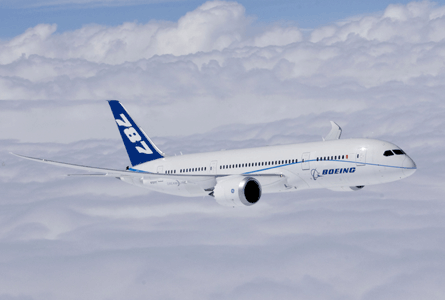Boeing is fast approaching the halfway stage in the 787's flight-test programme, having recently achieved the important milestones of 1,000h in the air and the introduction of the second engine option in to the trial effort.
Meanwhile, General Electric says that an upgrade planned for introduction next year will deliver a 2% fuel burn saving and bring the 787's GEnx-1B performance in line with, or ahead of, the original target.
The 1,000h point was passed on 16 June, as the first of two GEnx-powered Dreamliners joined the four Rolls-Royce Trent 1000-powered 787s engaged in the flight-test programme. Boeing estimates that it is "about 40% through the test conditions" required to certificate the initial variant of the all-new jetliner. The programme is expected to eventually accumulate 3,100 flight hours.
 |
|---|
© Boeing |
"More work remains, but we are seeing excellent progress in flight test," says Scott Fancher, vice-president and general manager of the 787 programme. "We are making solid progress on the ground testing required on the flight-test fleet as well," he adds.
GEnx general manager Tom Brisken says that the two-and-a-half-year programme delay allowed GE to reduce the shortfall in GEnx fuel burn from a reported 4% to "closer to 2%". This deficit will be addressed, and possibly beaten, with another upgrade package to be introduced in the third quarter of 2011.
Meanwhile, Brisken says that a full understanding of the airframe/engine performance and fuel burn of the GEnx-2B-powered Boeing 747-8 is about a "month or two" away. He declines to comment on suggestions from industry sources that the GEnx-2B is also 2-4% behind its fuel-burn target.
Source: Flight International














































